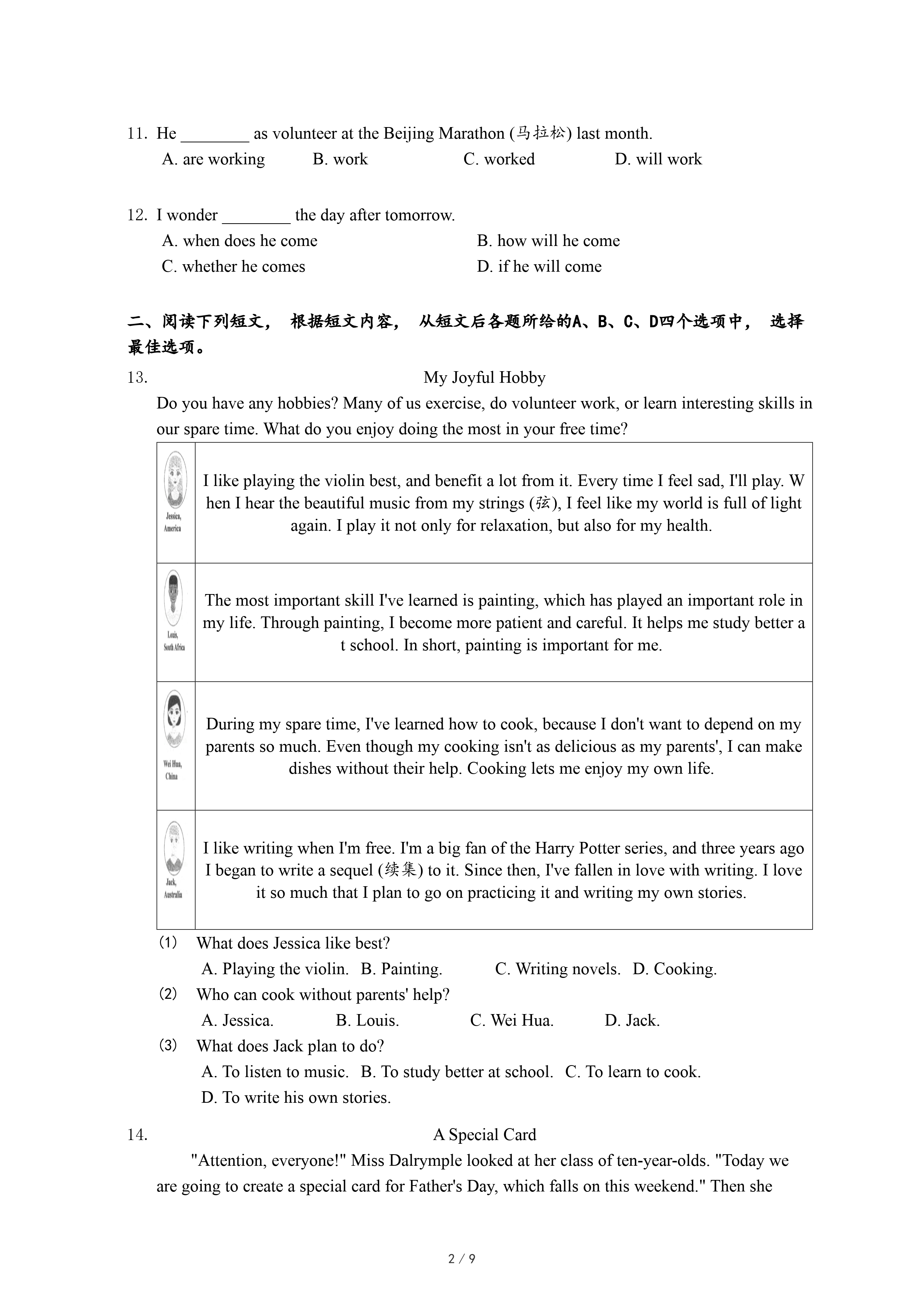20.Perfectly Imperfect
The artist Leonardo da Vinci, perhaps best known for painting the Mona Lisa, produced a drawing called the Vitruvian Man. In it, da Vinci showed his idea of the perfectly sized male body. But is this really what a perfect body looks like?
An imperfect man
Consider Michael Phelps. The winningest swimmer of all time, Phelps earned 28 Olympic medals. His body does not look like the Vitruvian Man. In fact, Phelps' body is quite unusual. The best swimmers tend to have long torsos (躯干) and short legs. Phelps is 6 feet 4 inches tall, but his torso is as long as what you would expect to see in a man who is 6 feet 8 inches tall. His legs are the length typical of a man who is 5 feet 10 inches. Phelps has long arms too. Like the Vitruvian Man, most people have a wingspan roughly the same as their height. Phelps' wingspan is 6 feet 7 inches, three inches longer than his height.
His ankles are extremely flexible and his feet are big. So Phelps' legs act like flippers (脚蹼) when he swims.
No one could argue that Phelps has a perfect body in da Vinci's sense. But is it correct to say it is imperfect?What does "perfection" mean when we are talking about human biology?Does it even exist?
What is physical perfection?
Maybe perfection has more to do with how a body works than how it looks. How we work actually depends upon how well we fit into our environment.
Here's an example from the animal kingdom. Imagine brown rabbits and white rabbits in a snowy field. Under these conditions, predators (捕食者) are less likely to see and catch the white rabbits. In a summertime field—all brown soil and green and golden plants—white rabbits are more visible (可见的) and easier to catch. Neither white nor brown fur is perfect for rabbit survival. Rabbits need different bodies for different seasons. And in fact, in some types of rabbits, fur color changes with the seasons. Like rabbits, all living things adapt to their environments. They need some changes to help thrive (茁壮成长) in their specific environments. But evolution (演变) isn't engineering. Often, imperfections that don't affect survival too badly get passed down through the generations.
Variation (变化) as a way to success
Michael Phelps' body is not perfectly symmetrical (对称的) or balanced. His physical variations, however, may have given him the advantages to be a close-to-perfect swimmer. Phelps' case is not the only one;top athletes show great variability that provides them with the physical characteristics to approach perfection in action. Usain Bolt, an Olympic sprinter (短跑运动员), has legs so long that it takes him four to five fewer steps to complete a 100﹣meter race than his competitors.
Simone Biles, another Olympic gold medalist, is both strong and small. It is perfect for her sport of gymnastics. She may also have a better-than-average ability to sense where her body is in space, perhaps making jumps easier than it would be for an average person. No athlete is born with the skills to win gold medals, though. Those achievements require years of effort.
Using variation to your advantage
Da Vinci's drawing of the Vitruvian Man put maths and art together. To da Vinci, the Vitruvian Man showed perfect proportions (比例). It was his image of the perfectly formed man. Da Vinci is a time﹣honored artist, but is there really such a thing as a perfect body?
No.
In biology, there is no such thing as one perfect body. In fact, variation in all living things, including us, is the rule. This variation is important for our life. Human variation has allowed us to live in wildly different environments — the tropics, deserts, and the Arctic — and to develop many different physical, mental, and emotional talents. Not only is there no perfect human body, but also our species thrives because we are different from one another, each of us suited to our own way of living.








